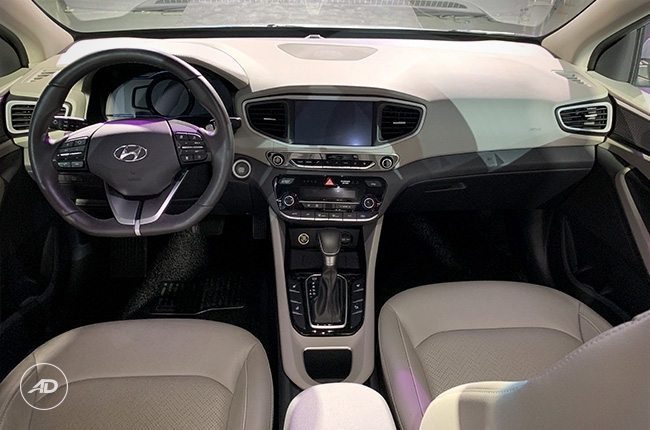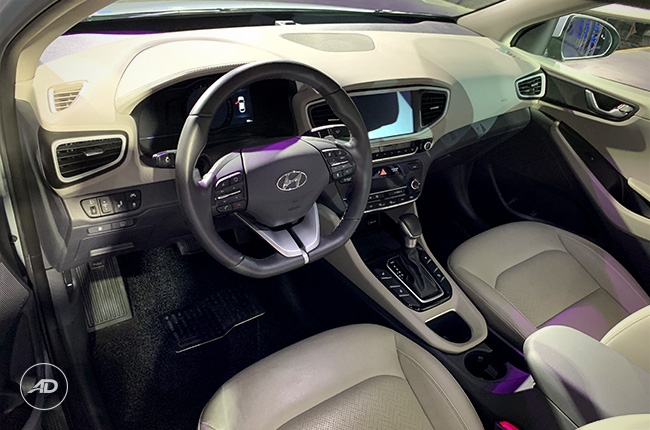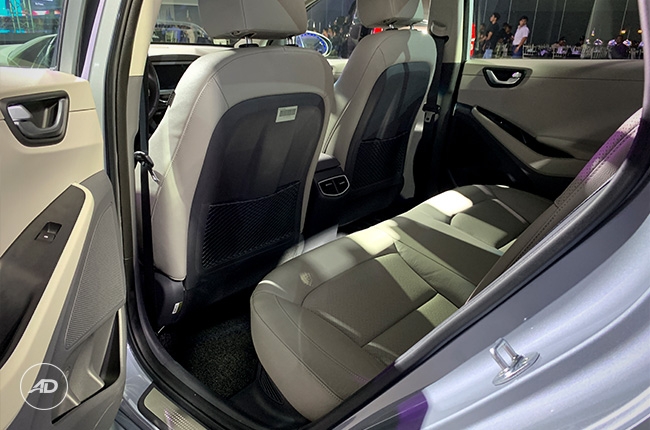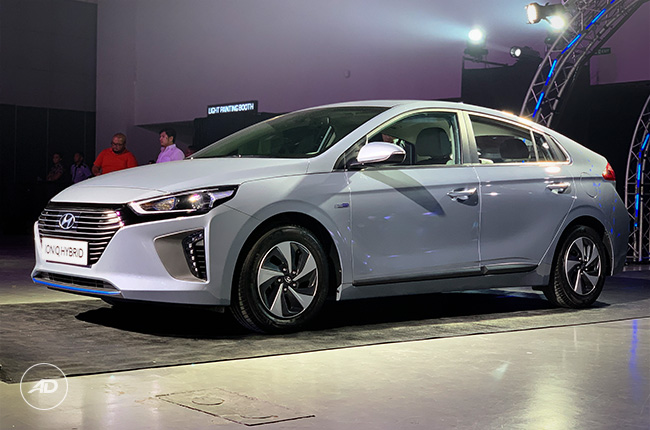
Hyundai Asia Resources, Inc. (HARI) officially introduced new models in the local market, welcoming December 2018 with a bang. Apart from the 2019 Accent, the Ioniq Hybrid enters the hybrid vehicle segment and will directly compete with the Toyota Prius.
Like the Prius, the Ioniq Hybrid utilizes a conventional hybrid system. To give you a clear idea, conventional hybrids utilizes both an electric motor and a combustion engine, working together to move the car. Unlike plug-in hybrids, you can’t recharge the electric batteries in conventional hybrids by plugging it to a wall box charger. Rather, the internal combustion engine charges the motor, as well as take over during longer drives.
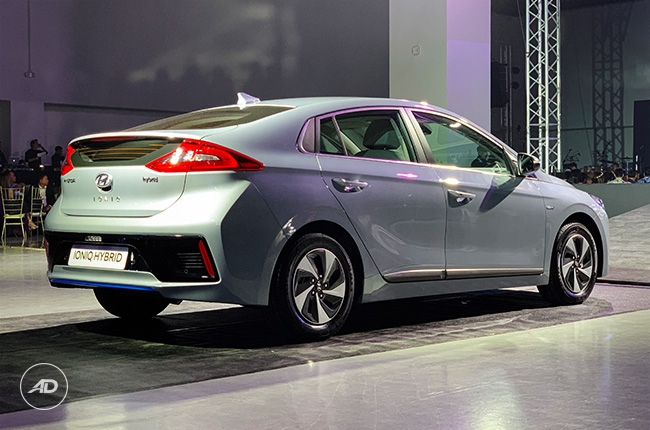
Before we delve deeper into its most technical aspects, let’s appreciate the car’s appeal. We can’t deny the fact that the car looks pretty with those sharp and aggressive headlights. It has a subtle version of Hyundai’s cascading grille that’s complemented by big trapezoidal air vents with daytime running lights (DRL) on the bumper.
The side profile gives you this familiar outline of what a hybrid hatchback (or liftback, if you want to be more technical about it) looks, well, like the Prius. It has this longer hatch tail, which gives an almost-sedan outline if you are to look at it on side-view. The rear fascia features a set of LED taillight, as well as a rear spoiler with high-mount stop light.

Inside, the cabin has an electrically-adjustable driver seat and a 60:40 split-folding rear seats, all wrapped in leather for that upscale interior feel. The driver will be greeted by a flat-bottom steering wheel, a supervision type with Rheostat instrument cluster, and a five-inch display on the center console that features Aux, USB, and Bluetooth connections.
You won’t feel at stake inside the Ioniq Hybrid as there is a full fleet of airbags that envelops the entire cabin – from dual front to side and curtain, all the way to knee airbag for the driver. The car is equipped with smart keyless entry and an illuminated push-button start. While these features aren’t a new thing, especially to electrified vehicles in this day and age, it is important to take note that the Ioniq’s price range is significantly low compared to its well-established competitor. The Hyundai Ioniq is tagged at P1,498,000, compare that to the above-P2 million price range of the Prius.
Powering the Ioniq Hybrid is a combination of a 1.6-liter gasoline engine and a Permanent Magnet Synchronous Motor (PMSM) electric mill. The 1.6-liter engine has a maximum power output of 104 hp and 147 Nm of torque, while the electric motor can churn up to 58 hp and 170 Nm of torque. Powering the electric motor, on the other hand, is a 240-volt Lithium-ion Polymer battery with a capacity of 1.56 kWh. Combining the two mills will give you 139 hp and 264 Nm of torque.
For a touch of personalization, the Ioniq is offered in three colors: Phantom Black, Polar White, and Aurora Silver. It comes with a five-year unlimited mileage warranty, plus the benefit of Hyundai Genuine Parts.
Latest News
-
Geely’s EX2 EV headed to Australia — is a Philippine launch possible? / News
The Geely EX2 is confirmed to go on sale in Australia in 2026. Could a launch in the Philippines also be on the cards?
-
Hyundai Motor Philippines is the FIFA Futsal Women's Teams' official mobility partner / News
Hyundai Motor Philippines strengthened its partnership with FIFA through its support of the FIFA Futsal Women's Teams.
-
Kia Philippines backs EJ Obiena as Atletang Ayala continues championing Filipino athletes / News
Kia Philippines strengthens its support for EJ Obiena, backing the Olympian with dedicated mobility at home and abroad.
Popular Articles
-
Electric Vehicles in the Philippines for under P1 million
Jerome Tresvalles · Aug 19, 2025
-
Top 3 Cars For Every Lifestyle—What Cars Are Right For You? | Behind a Desk
Caco Tirona · Apr 24, 2024
-
5 Tips to Maximize Fuel Efficiency
Jerome Tresvalles · Sep 09, 2024
-
Five driving habits that are draining your fuel tank
Jerome Tresvalles · Jun 24, 2025
-
Can engine braking harm your engine?
Jerome Tresvalles · Sep 11, 2025
-
Do electric cars even need maintenance?
Jerome Tresvalles · Oct 23, 2024
-
Best vehicles for an active outdoor lifestyle
Shaynah Miranda · Jul 25, 2024
-
How to drive different types of vehicle transmissions
May 23, 2024
-
5 easy ways to keep your car interior clean
Allysa Mae Zulueta · Nov 15, 2021
-
How to survive Metro Manila traffic
Earl Lee · Aug 16, 2022

